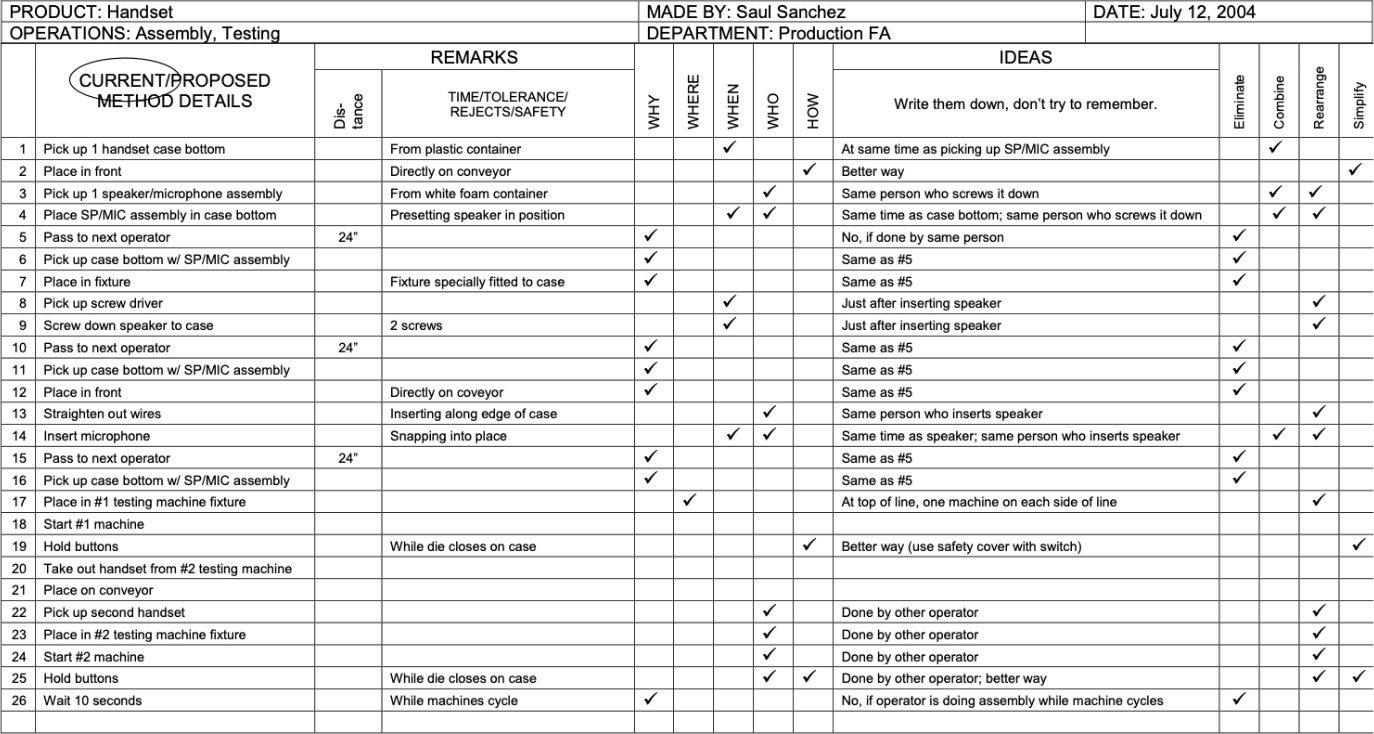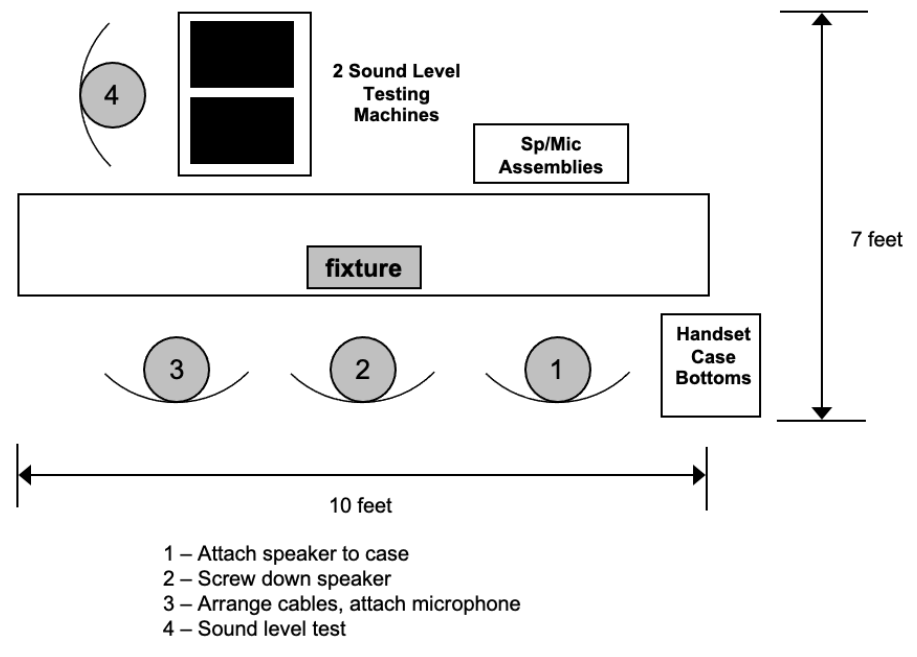
The world around us is constantly changing — the technologies, the availability of resources, what we value — so it’s only natural that our processes need to change too. This is especially true if you’re in a business that generates a product or service, since the efficacy of your processes affect the end result and, ultimately, the success of your business.
The need for process adaptation and improvement applies to every industry. Changes to work processes affect everything from overall efficiency to workers’ safety to ease of communication in the workplace. Assuming that every workplace will encounter the need for process updates and improvements at some point, it’s wise to build a process improvement plan blueprint so you’ll know how to implement and maintain changes when necessary.
The goal of a process improvement plan is not merely to fix one problem and be done — it’s about creating and fostering a culture and mindset of continuous improvement that becomes embedded in your organization.
In business, a process improvement plan refers to the task of identifying and analyzing work processes in order to make them less wasteful, more efficient and ensure that all resources are being utilized to their maximum potential. Perhaps most importantly, a process improvement plan should address how to maximize your existing workforce’s talents to ensure that everyone feels adequately utilized, challenged and supported in their roles.
There are many methodologies that govern workplace process improvement, most of which can be used on their own or in combination with other methodologies. Some of the more well-known improvement frameworks include Training Within Industry (TWI), Six Sigma and lean operations.
Process improvement plans include any decisions, large or small, that are made for the purpose of improving workplace operations. These decisions could pertain to the physical environment, such as rearranging work spaces to facilitate better communication; or to large, systemic issues, such as high turnover rates that require an overhaul of the entire employee support framework. Any changes should be informed by a company’s strategic plan or mission.
The plan for addressing any of these issues is typically presented in a document that clearly identifies the steps required to start making improvements. Anyone involved in making improvements should have access to this document in a format that they can understand, whether that’s through visuals (such as infographics or diagrams), a written manual or training videos. Presenting this information in multiple formats can empower all employees to propose or make small changes that add up to big changes over time.
Process improvement plans have a range of general benefits — more efficient workflows, higher productivity — but it helps to identify specific pain points to build the most effective plan and thus experience targeted improvements.
Companies likely in need of a process improvement plan may be experiencing any of the following:
Once a company experiencing any of these symptoms identifies the root cause and implements a plan for continuous improvement, the benefits start accumulating:
One of the most important — if not the most important — parameters for implementing a process improvement plan is that it should not be designed for or applied to only one process.
For example, perhaps a department is experiencing a breakdown in communication between managers and frontline employees. The plan for improvement should be designed so that it can be transferred to other scenarios in other departments, not only to address this one specific problem in a specific context. Methodologies like TWI and Standardized Work are designed to be implemented in any scenario across an organization — think of them as more of a blueprint for changing your mindset, rather than discrete steps in a rigid procedure.
You must also understand that some improvement plans take months or years to result in measurable change, especially when it comes to large scale KPIs like revenue or employee retention. If changes are being made in multiple areas of the business such as production processes, hiring practices, training, policies, technology and more, it may take an extended period of experimentation and adjustment to start seeing measurable, sustainable improvements.
No matter which type (or types) of process improvement plan you implement, be sure to document each step along the way. Proper documentation will help your teams identify what’s working and what needs to be adjusted for optimal success, as well as indicate how well the plan aligns with your organization’s overall business strategy.
The following is an example of the steps an organization might take to begin implementing a process improvement plan:
It’s very important to communicate the need for the process change, as well as the fact that it’s happening, to anyone who may be impacted. Emphasize the fact that, ideally, changes should be made with them, not to them. This creates the groundwork for engaging employees in the improvement process so that their ideas are considered and used, which encourages and supports buy-in for the new improved method or process.
Stay mindful of how any changes affect other processes or departments, such as reporting structures, communication channels, emergency procedures, maintenance, employee shifts and so on.
Of course, the success of any new process depends on team members’ ability to follow and execute it. This means that the following steps may also need to be a part of the overall plan:
Once the new process has resulted in measurable success (or even before), work to standardize the steps so it becomes easier to achieve the same results no matter who is carrying out the work.
Finally, it’s natural that some team members may be resistant to changes, especially if they have been used to one way of doing things for a long time. Along with effectively communicating the need for change, improvement plan implementation teams should establish how they will address employees’ concerns and rebuttals, taking all employee feedback into account and being sensitive to how different team members react to change.
Remember that the ideal process improvement plan has no end — rather, it’s meant to be a continuous drive towards improvement that becomes embedded in the overall company culture.
As mentioned earlier in this article, there are a handful of formal improvement methodologies that have been deployed successfully in organizations across the globe for the better part of a century.
Lean
Perhaps the most well-known type of process improvement plan, especially in manufacturing, lean is an approach to work that seeks to eliminate as much waste as possible in all processes, thereby maximizing efficiency and reducing costs. In a lean operation, all changes are made in order to deliver the highest value to the customer.
Six Sigma
This method for quality control was developed by Motorola engineer Bill Smith with the goal of producing work that is 99.99966% free of defects. Six Sigma certification is a highly valued qualification across industries, with levels of expertise indicated by belt colors, similar to martial arts. At its most fundamental, Six Sigma outlines five essential steps for improving processes: Define, Measure, Analyze, Improve and Control (DMAIC).
Lean Six Sigma
As the name indicates, this method is a combination of lean and Six Sigma, wherein team members improve processes through the DMAIC approach while simultaneously reducing waste.
Plan-Do-Check-Act (PDCA)
PDCA is a continuous change management cycle that follows the scientific method of “hypothesis-experiment-evaluation,” as illustrated by the steps “plan, do, check and act.” The approach is attributed to both statistician Walter Shewhart and engineer W. Edward Deming, and was later adopted and iterated by the Toyota Motor Corporation. PDCA is a key element of lean management and is frequently associated with Improvement Kata, the routine practice for developing scientific thinking in the workplace.
Total Quality Management (TQM)
A precursor to lean and Six Sigma, TQM focuses largely on quality control and identifying ways to improve output. Similar to lean, TQM does not have discrete steps for process improvement, but rather informs a mindset of continuously seeking ways to improve and maintain product quality.
More specific approaches like TWI and Standardized Work can be embedded into any of these frameworks and methodologies.
What follows is an example of a TWI Job Methods improvement plan for assembling a telephone handset in a production facility.
Job Methods Improvement 4-Step Method:
Step 1 – Break Down the Job
Step 2 – Question Every Detail
Step 3 – Develop the New Method
Step 4 – Apply the New Method
Step 1 – Break Down the Job

P. Graupp and R.J. Wrona. 2016. The TWI Workbook: Essential Skills for Supervisors. Boca Raton, FL: Taylor & Francis Group/CRC Press. Used with permission.
Step 2 – Question Every Detail
Step 3 – Develop the New Method
Step 4 – Apply the New Method
Before Improvement

After Improvement

Document the New Method

Whatever approach you choose to implement in your organization, the guidance of an objective consultant can be invaluable. It is possible to design a process improvement plan internally, but partnering with improvement experts can free your team members from developing and implementing a net-new plan in a vacuum.
The TWI Institute takes a people-first approach to workplace improvement, letting the needs of those who do the work inform our plan of action. Our Master Trainers are highly skilled in identifying opportunities for improvement, listening to team members’ concerns and offering objective feedback intended to increase your customers’ value and support the long-term success of your business. To learn more about our dozens of training opportunities, explore our programs or send us a message.